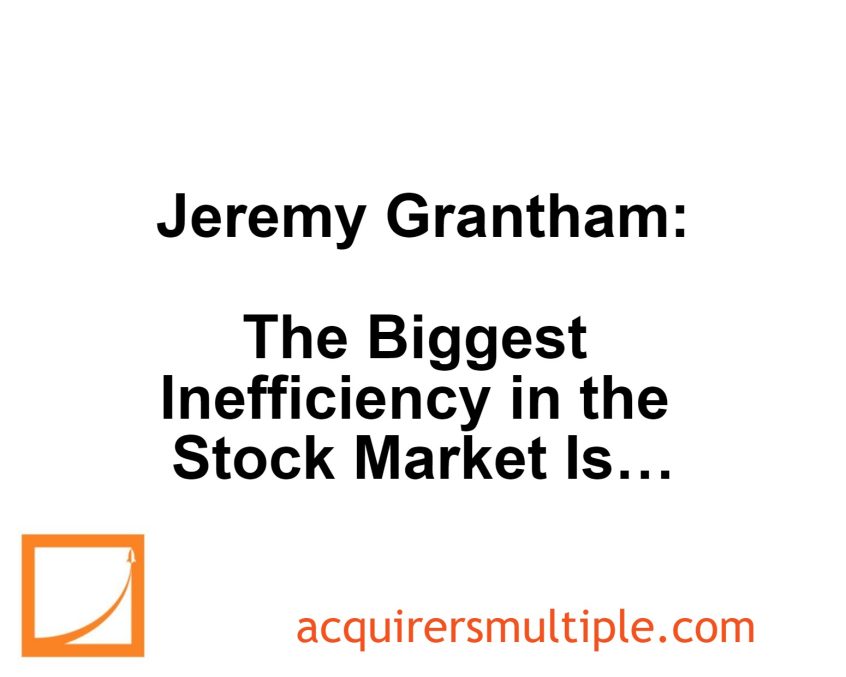During this keynote address at Columbia University, Jeremy Grantham discussed the inefficiency of momentum in stock markets, emphasizing that while there are many inefficiencies, momentum is the largest.
Over time, he argues, asset prices gravitate back to their fair value, which he defines as their replacement cost. Using the analogy of feathers in a hurricane, Grantham explains that while the timing is uncertain, value ultimately reverts to its fair price.
The challenge, however, is the unpredictable timeframe of this mean reversion, often exceeding clients’ patience, which he humorously notes is about three years—after which investors demand results or lose confidence.
Here’s an excerpt from the keynote:
In my opinion, this is the major inefficiency in the stock market. There are many inefficiencies, perhaps hundreds. It is a very inefficient enterprise, but by far the biggest inefficiency is momentum. It exists in every asset class that we can study or have ever studied.
The good news, in real life, is that eventually reality speaks. The reality is that the fair value of any tangible asset is its accurate replacement cost. Sometimes, that is not easy to work out, but if you could work it out, we can agree that it is fair value. Very gradually, things work their way back to fair value.
People used to say to me, how can you be so certain of some uncertain long-term future, when you’re not certain about the short term?
It bamboozled me for quite a few years, until I came up with the analogy of standing on a high building in Florida with a bag of feathers in a hurricane, throwing the feathers up in the air. One of them would hit a block away in a minute, and another one would go to Maine in seven or eight days, the way some poor unfortunate canaries actually do get swept along.
You know one thing about all those feathers: that at some uncertain time horizon, every single one of them will hit the ground. That is really the analogy with value. You are not sure of the time horizon, but it is like a gravitational pull; eventually it will hit fair value or replacement cost.
The problem is that sometimes the feather lands quickly and sometimes slowly. You have a great deal of uncertainty about how long it will take to mean revert, and that is the rub.
But the client’s patience is well known. It is 3.00 years. Those of you who are clients will know that to be very precise and quite accurate. If you underperform for more than three years, you will be shot.
Sometimes the timing of uncertainty is longer than three years, sometimes the mean reversion is longer than three years and you meet the fate that we basically met in 1999 and 2000.
You can find a transcript of the keynote here:
Jeremy Grantham – Keynote Address – Columbia University
For all the latest news and podcasts, join our free newsletter here.
Don’t forget to check out our FREE Large Cap 1000 – Stock Screener, here at The Acquirer’s Multiple:



